The content of the article
People usually frantically search the web for articles about saving plants when they realize that the indoor flower is almost ruined. Although the simplest preventive measures and proper care are enough for normal growth.
Take an example. Growers specify why spathiphyllum leaves turn yellow. What to do? They ask. This plant is so unpretentious that it is necessary to try very hard to ruin it and bring it to yellowing. In other words, what kind of host are you, even if your spathiphyllum is ill? Now we will analyze all the possible reasons.
Exhaustion
Spathiphyllum often blooms for a long time. Therefore, he needs a lot of strength and nutrition for this process. Some owners do not change care during flowering, and often this leads to severe depletion of the plant.
Signs Yellowing of the leaves begins from the lower tier. It happens evenly and quickly. If you do not take any measures, then the leaves will soon turn yellow and fade throughout the plant. Then the flower will die.
What to do. Increase the dose of fertilizing with the beginning of flowering. This will give spathiphyllum extra strength. You can use any complex mineral fertilizer. Just see that there is not a lot of nitrogen. A large number of it is not always useful for indoor flowers. They begin to build up a lush green mass to the detriment of full bloom. In addition, the excessive use of nitrogen fertilizers makes the leaves watery and loose.
It would be better if the mineral water contains phosphorus, potassium, boron. These elements have a beneficial effect on flowering, prolong it.
All of the above applies to prevention. How to help spathiphyllum if the leaves are already yellowed from exhaustion? In this case, shoving into the soil with handfuls of fertilizing is useless. The yellow blades will not recover.
Try transplanting a flower into a new land. If possible, then by transfer to a slightly larger pot. But, some flower growers do not recommend leaving the old soil, because it is already "empty". They propose to shake it from the root system to the maximum, trying to break off small roots as little as possible. Then you need to take new soil and pour a small mound into the pot. Naturally, do not forget about drainage.
Now the root system is neatly spread out over the soil and filled up from above to the level where the earth was before. It is absolutely forbidden to penetrate the growth point! Spathiphyllum is already exhausted, it is violet to him, where it is shoved. And then they fall asleep with their heads. It is time to fall asleep with an eternal sleep. But we help him recover, and not finish it off completely.
Tip. After a transplant, the plant can not be fed for at least a month. Let the roots take root first.
A reference point for the beginning of feeding is yellow leaves. They are left on the plant. Once they are completely wilted, you can remove and begin to slowly give fertilizer to the spathiphyllum. Let it be until half the usual dose, gradually bring it to normal.
Another situation. The plant has grown rapidly and there is no possibility to transplant it. In this case, you can carefully remove the topsoil (4-7 cm). In its place they fall asleep new land. In this situation, the feeding mode can not be changed.
Lighting and temperature
Sometimes spathiphyllum gets enough nutrition, but the leaves turn yellow anyway. The reason for this may be direct sunlight. Moreover, the usual daytime sun is unlikely to cause significant damage. Burns are caused by a scorching summer sun.
Another situation. In winter, the sun does not seem to burn, and the flower on the windowsill still turns yellow. From what? From too dry air.Heating radiators are the culprits.
Signs First, the tips of the leaves turn yellow on the whole plant. Then they die off very quickly. Over time, damage spreads over the entire surface of the leaves. Next, the flower dies.
What to do. First, you need to determine the exact cause: the sun is guilty or excessively dry air. Better yet, if the owners take care of the conditions of detention in advance. When placed in the summer on a hot windowsill, it is imperative to shade the spathiphyllum from direct sunlight. This is easy to do with a light, thin curtain, a piece of white cloth, or plain office paper.
Just do not rearrange the pot with the plant deep into the room. The lack of lighting leads to the fact that the leaves of the flower are very elongated and pale.
You can get rid of dry air in the cold in several ways:
- Radiators are covered with a damp towel or a thick blanket.
- Next to the pot put additional containers with plain water.
- On the windowsill, place a tray or a wide low bowl with pieces of sphagnum, peat or expanded clay. All this stuff is periodically well moistened with water.
- Regularly spray the air around the spathiphyllum from the atomizer.
- The room includes a humidifier.
As you can see, there are many ways to help the spathiphyllum withstand hot or dry weather. You can use any suitable one. The main thing is that the plant likes it.
Tip. The dried ends of the leaves are cut off, slightly grabbing healthy tissue. Strongly yellow blades are removed, slightly changed pigmentation will recover on their own.
Improper watering and cold
Spathiphyllum likes to sit in moist ground. But not raw! Some gardeners literally fill the flower. Well, if the drainage holes do their job, and the roots do not float in the swamp. And if the holes are closed with too dense soil or an overgrown root system?
Plus, it happens that on some windowsills it is too cool because it blows. Or the room itself has a low temperature. All this is fraught with decay of the root system.
Signs A yellow border appears along the edge of all leaves. It quickly blackens and dries. The plant itself is sluggish.
What to do. Urgently transplant spathiphyllum into another substrate. Be sure to cut off all rotten roots. Adjust the watering schedule. It is not set daily or at certain hours. The reference should be the condition of the soil. It should be wet, but not wet. Watering time cannot be determined by the upper layer.
There are 4 options to find out when it is time to drink spathiphyllum:
- Dig the soil and see what condition it is at depth.
- Plant a flower in a transparent pot. Condensation will be clearly visible. Its absence signals the need for watering.
- Stick a wooden skewer or stick without bark into the ground to the bottom. After 12-14 minutes, pull out and look at the moisture level on it. It will be clearly visible.
- Buy special beacons in a flower shop. They are installed directly in the ground. When the humidity level changes at a certain height, the beacons change color. Immediately clear - drag a little water.
And do not overdo it with watering! Some plants die from excessive care than from its lack.
How to deal with hypothermia of the roots of spathiphyllum? And do not fight with him. It can be prevented very simply. It is enough to put a foam plate or a flap of thick woolen fabric under the pot. It keeps the foam well under the laminate or cork stand for hot dishes.
Tip. In winter, make sure that the windows do not blow. Then you don’t have to dance with the lining.
Diseases and Pests
As a rule, spathiphyllum is rarely sick. But sometimes, in spite of decent leaving, trouble happens. Most often, the nature of the disease is of fungal origin. Spores can get into the green from infected soil or from other flowers in the neighborhood.The same applies to insect pests.
Signs The leaves turn yellow throughout the entire plant. Brown spots appear, which gradually grow. White plaque is visible on the underside of the sheet plate or uninvited guests are sitting. By the way, it is they who can become carriers of the disease.
What to do. You can try to execute insects with a warm solution of household or potash soap. But it can be very difficult for them to wash dense bushes thoroughly and from all sides. And, for example, your whitefly is completely up to the bulb. In the fight against it you will have to spend a lot of effort, time and money.
You can try some more folk methods. This is an infusion of onion husks or ash of woody trees, decoctions of poisonous or strongly smelling herbs (celandine, tansy, valerian, mint). These methods help get rid of pests, but only if they are few. That is, the infection occurred recently.
With a large accumulation of insects do not suffer. Use any systemic insecticide, preferably long-acting. Strictly observe the dosage and recommendations on the packaging. Do not forget that it is poison. If necessary, you can repeat the processing of days after 5-7. Chemistry still saves time and nerves.
Tip. Work not only the green mass, but also the earth in a pot. You may simply not notice some pests. Therefore, do not take risks, water quality.
It’s more difficult with diseases. If the fungus or bacterium reaches the growth point, then it will be impossible to help the spathiphyllum. You have to part with it. Therefore, salvation should begin as early as possible.
The first step is to cut off all the infected parts of the plant. Roots, leaves, stems - we do not regret anything. Any, even the smallest focus of a sore can spread throughout the flower. All sections are treated with a weak solution of potassium permanganate, then sprinkled with crushed activated carbon.
But these measures are not enough. The infection can be at the cellular level, and it is possible that the bacteria remained in the healthy parts of the spathiphyllum. Therefore, it would not be desirable, but you will have to turn to the good old chemistry for help. Unfortunately, here you have to choose: to stay on the side of organic farming, observing the death of a flower, or to step over your principles and help the spathiphyllum get out.
Treatment consists of several stages:
- Spraying with any systemic fungicide. It is carried out very carefully, with full wetting of all leaves (on both sides) and the stem.
- Plant transplantation into new soil (disinfected in a freezer, oven or using a strong solution of potassium permanganate). The pot is also better to take another.
- Repeated spraying with the drug.
To maintain diseased spathiphyllum, it is recommended to add epin, aloe juice or zircon to the water for irrigation. The vitality of the plant will increase many times.
Tip. Cultivate the soil before planting phytosporin. This will protect the flower from re-infection.
Why spathiphyllum leaves turn yellow. What to do? You do not have to look for a solution to the problem anymore if you start to properly care for the plant. After all, prevention is always easier than eliminating the consequences later. And to kill spathiphyllum - it is still necessary to try. Better love it and your flower will grow into a large beautiful bush of lush greenery.
Video: spathiphyllum - problems and solutions

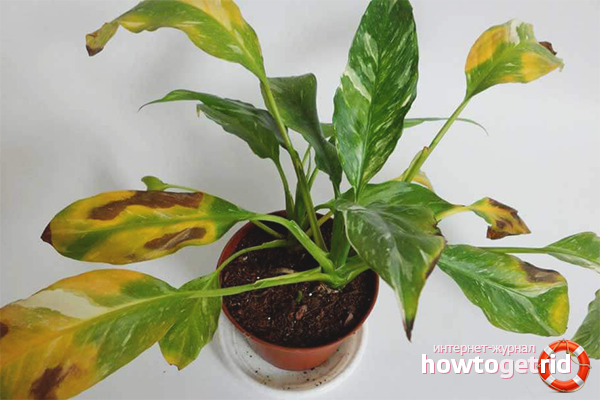
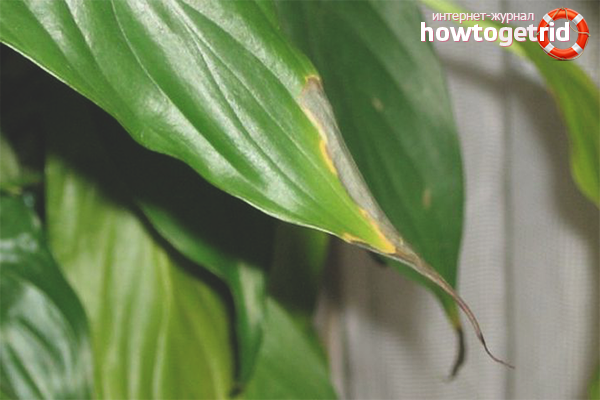
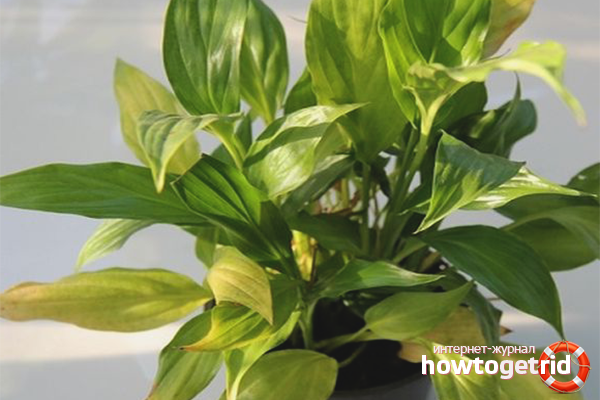
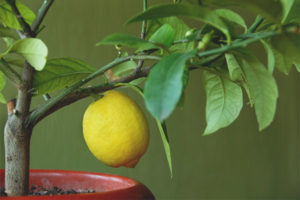
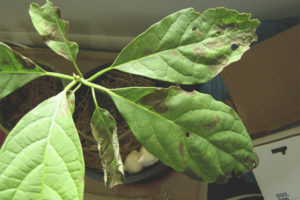


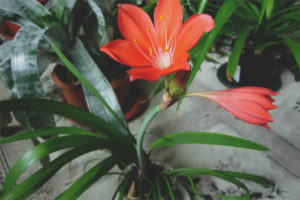
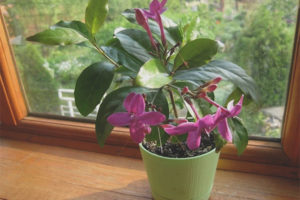
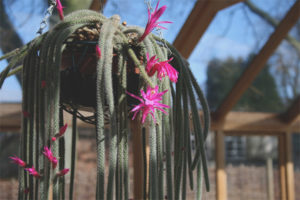
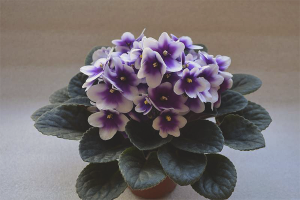
Submit